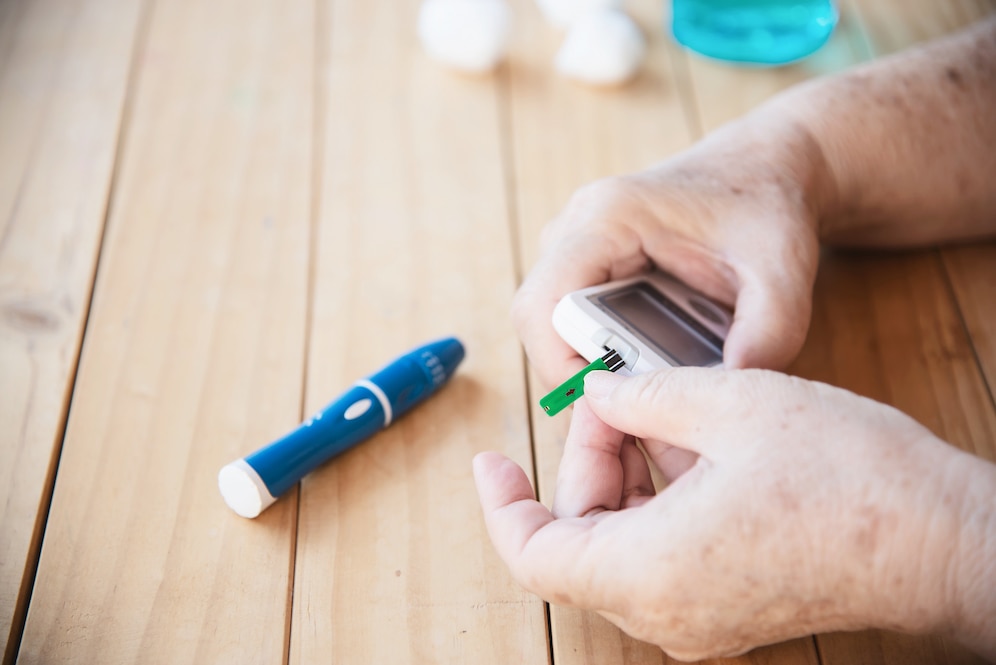
Diabetes and seniors - Part 2
Since diabetes is very important especially in the elderly, we will investigate this disease further. In the previous article, a brief explanation was given about diabetes and its symptoms. And now, in this article, you can learn more about the types of diabetes, ways to control and manage it, etc.
Diabetes and its types
There are two main types of diabetes.
In type 1 diabetes, the body does not make insulin. Although older adults can develop this type of diabetes, it often begins in children and young adults, who then have diabetes for life.
In type 2 diabetes, the body does not produce or use insulin well. This is the most common type of diabetes. This disease often occurs in middle-aged and elderly people, but it can also affect children. If you are overweight, sedentary, or have a family history of diabetes, you are more likely to develop type 2 diabetes. Women who develop gestational diabetes (a type of diabetes that develops during pregnancy) during pregnancy also have a higher chance of developing type 2 diabetes later in life.
What is prediabetes?
Prediabetes means glucose levels are higher than normal, but not high enough to be called diabetes. People with prediabetes have a higher chance of developing type 2 diabetes and heart attack or stroke.
If you are elderly and have diabetes, it is better to take measures to manage and control the disease. Here are some ways to stay healthy with diabetes:
- Check your blood pressure often.
- Manage your cholesterol. Have a blood test at least once a year to check your cholesterol and triglyceride levels. High levels may increase the risk of heart problems.
- Do not smoke. Smoking increases the risk of many health problems, including heart attack and stroke.
- Have an annual eye examination. Finding and treating eye problems early can keep your eyes healthy.
- Check your kidneys annually. Diabetes can affect the kidneys. Urine and blood tests show the health of the kidneys.
- Get flu vaccine and pneumonia vaccine every year. An annual flu shot will help you stay healthy.
- Take care of your teeth and gums. Have your teeth and gums checked by a dentist twice a year to avoid serious problems.
- Protect your skin. Keep your skin clean and use skin cream for dryness. Take care of minor cuts and bruises to prevent infection.
- Take time to look at your feet every day if you can't ask someone else to check your feet. If you have a sore, blister, broken skin, infection, or callus, see a podiatrist.
- Ask your doctor to screen you for cancer based on age, gender and other risk factors.
- Talk to your doctor about your concerns. Talk to your doctor if you think you're depressed, worried about your memory, or have any other concerns. There may be ways to help
What should be the normal range of blood sugar levels for the elderly?
The normal range of blood sugar levels is between 70 and 130 mg/dL before meals. The American Diabetes Association recommends that the blood glucose level of the elderly be less than 180 mg/dL two hours after a meal.
Can type 2 diabetes be treated?
Treatment of type 2 diabetes in the elderly is quite possible, but requires many lifestyle changes. The first is that seniors need to lose weight, because excess fat changes the way our body produces and uses insulin. With a strict diet that includes healthier foods, seniors can improve their blood sugar levels.
The treatment of type 2 diabetes in the elderly depends to a large extent on the length of time a person suffers from diabetes, the severity of the disease and its heredity.
According to a study reported by WebMD, 1 in 10 people with diabetes have successfully brought their blood sugar levels back to pre-diabetic levels by weaning off their diabetes medications through a rigorous regimen of exercise and a low-calorie diet.
But unfortunately, this is not possible for every patient. In some elderly people, diabetes is genetic, while others have not done anything to prevent diabetes in the early stages. But seniors who develop diabetes due to lifestyle and poor food choices can still reverse the condition or at least reduce some of the symptoms.
Drug treatment of type 2 diabetes
When using a complex insulin regimen in elderly people with diabetes, the risk of hypoglycemia should be considered. Our aim in this article is to review treatment options for elderly people with type 2 diabetes based on current international guidelines.
Any treatment strategy should be selected considering age, health status, self-management, cognitive and nutritional status, and co-morbidities. In general, in elderly people who are at higher risk for hypoglycemia, drugs with a low risk of hypoglycemia should be preferred. In addition, it is recommended that poly-pharmacological regimens be simplified in order to reduce adverse effects and achieve the most appropriate glycemic targets. The latest consensus on the management of hyperglycemia in type 2 diabetes and the European Association for the Study of Diabetes (EASD) recommend that drugs with proven cardiovascular benefits be used in patients with clinical cardiovascular disease. Anti-hyperglycemic drugs that are considered safe and effective for elderly patients with type 2 diabetes can be divided into two categories, oral and injectable.
Among the drugs that can be mentioned in the treatment of type 2 diabetes are: Metformin, Thiazolidinediones, sulfonylureas, Glibenclamide, Metaglinides, etc., which are prescribed by a specialist according to the patient's medical history and medical examinations.

 Our Location
Our Location +1 (778) 723-6108
+1 (778) 723-6108
Leave Your Comment